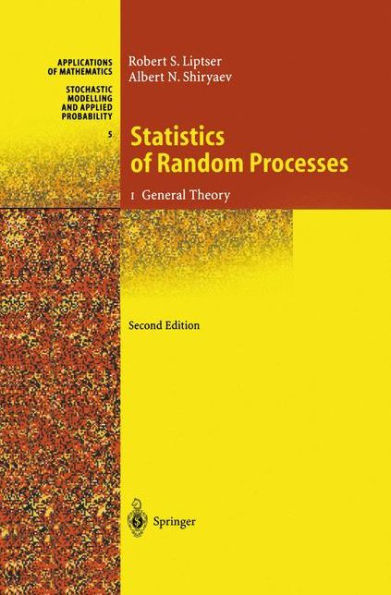At the end of 1960s and the beginning of 1970s, when the Russian version of this book was written, the 'general theory of random processes' did not operate widely with such notions as semimartingale, shastic integral with respect to semimartingale, the ItO formula for semimartingales, etc. At that time in shastic calculus (theory of martingales), the main object was the square integrable martingale. In a short time, this theory was applied to such areas as nonlinear filtering, optimal shastic control, statistics for diffusion type processes. In the first edition of these volumes, the shastic calculus, based on square integrable martingale theory, was presented in detail with the proof of the Doob-Meyer decomposition for submartingales and the description of a structure for shastic integrals. In the first volume ('General Theory') these results were used for a presentation of further important facts such as the Girsanov theorem and its generalizations, theorems on the innovation processes, structure of the densities (Radon-Nikodym derivatives) for absolutely continuous measures being distributions of diffusion and Itô-type processes, and existence theorems for weak and strong solutions of shastic differential equations. All the results and facts mentioned above have played a key role in the derivation of 'general equations' for nonlinear filtering, prediction, and smoothing of random processes.
1111357408
Statistics of Random Processes: I. General Theory
At the end of 1960s and the beginning of 1970s, when the Russian version of this book was written, the 'general theory of random processes' did not operate widely with such notions as semimartingale, shastic integral with respect to semimartingale, the ItO formula for semimartingales, etc. At that time in shastic calculus (theory of martingales), the main object was the square integrable martingale. In a short time, this theory was applied to such areas as nonlinear filtering, optimal shastic control, statistics for diffusion type processes. In the first edition of these volumes, the shastic calculus, based on square integrable martingale theory, was presented in detail with the proof of the Doob-Meyer decomposition for submartingales and the description of a structure for shastic integrals. In the first volume ('General Theory') these results were used for a presentation of further important facts such as the Girsanov theorem and its generalizations, theorems on the innovation processes, structure of the densities (Radon-Nikodym derivatives) for absolutely continuous measures being distributions of diffusion and Itô-type processes, and existence theorems for weak and strong solutions of shastic differential equations. All the results and facts mentioned above have played a key role in the derivation of 'general equations' for nonlinear filtering, prediction, and smoothing of random processes.
129.99
In Stock
5
1

Statistics of Random Processes: I. General Theory
427
Statistics of Random Processes: I. General Theory
427Paperback(Second Edition 2001)
$129.99
129.99
In Stock

Product Details
| ISBN-13: | 9783642083662 |
|---|---|
| Publisher: | Springer Berlin Heidelberg |
| Publication date: | 12/08/2010 |
| Series: | Stochastic Modelling and Applied Probability , #5 |
| Edition description: | Second Edition 2001 |
| Pages: | 427 |
| Product dimensions: | 6.10(w) x 9.25(h) x 0.24(d) |
From the B&N Reads Blog
